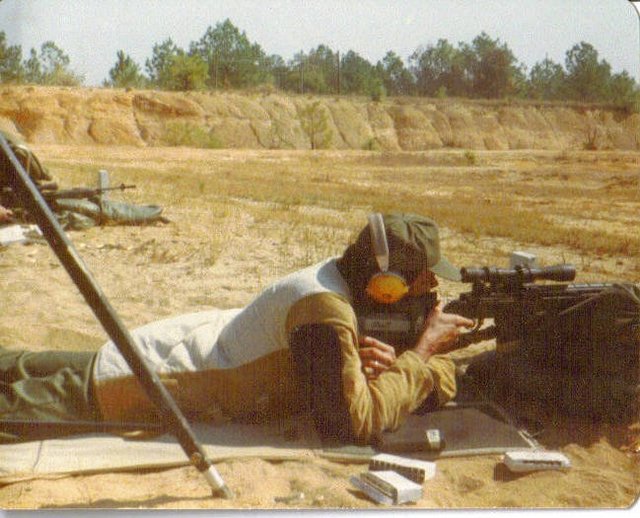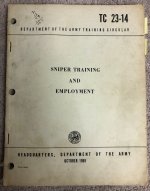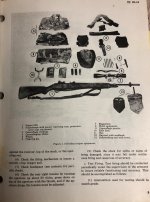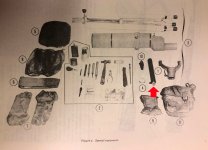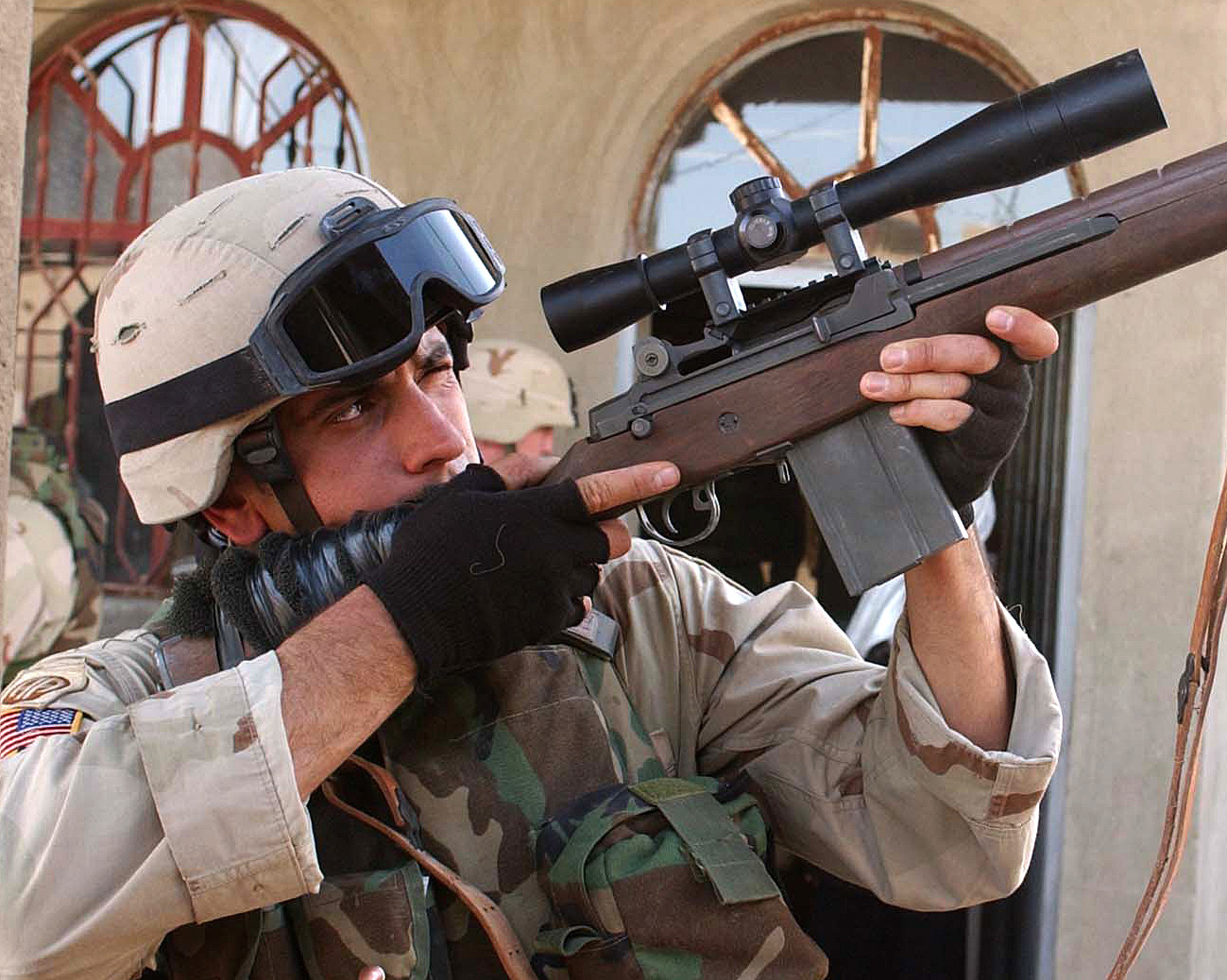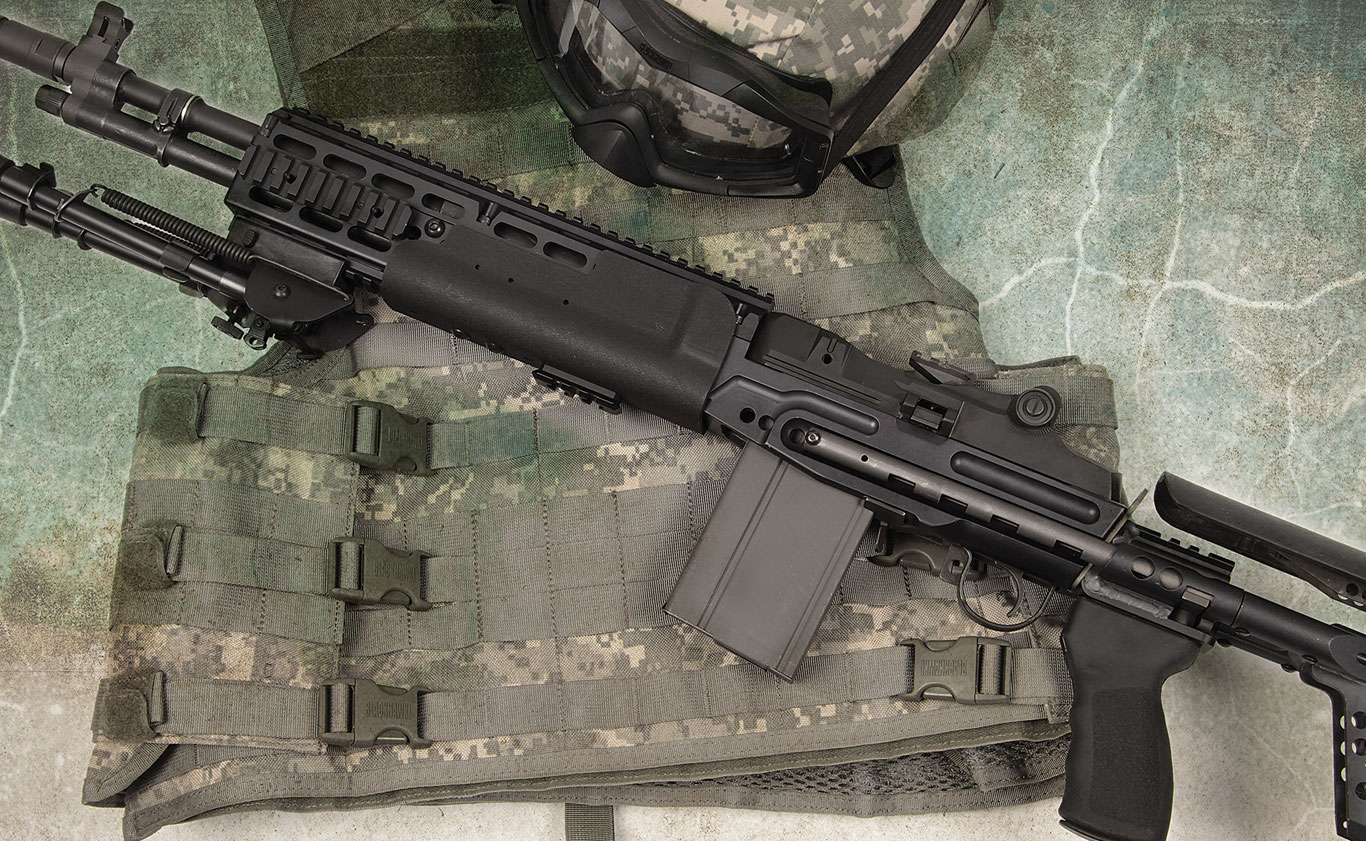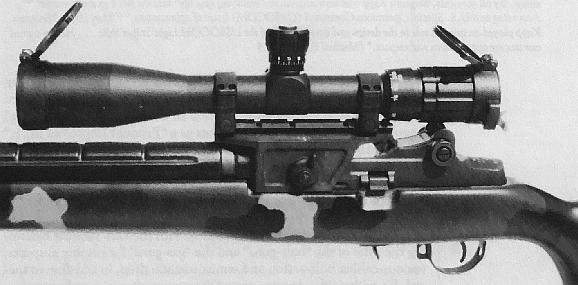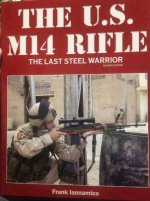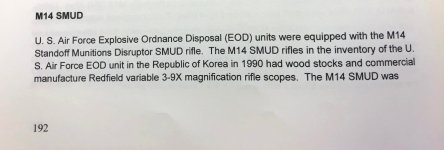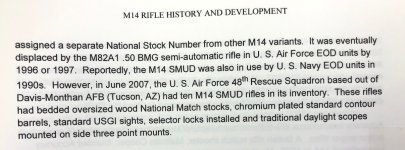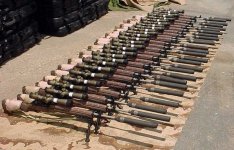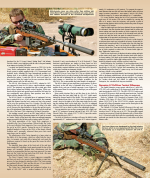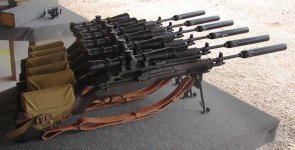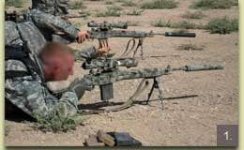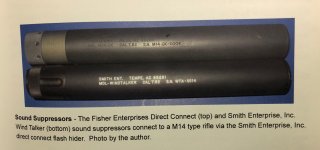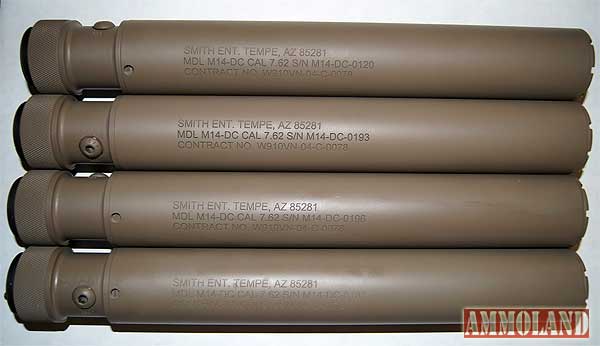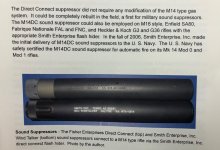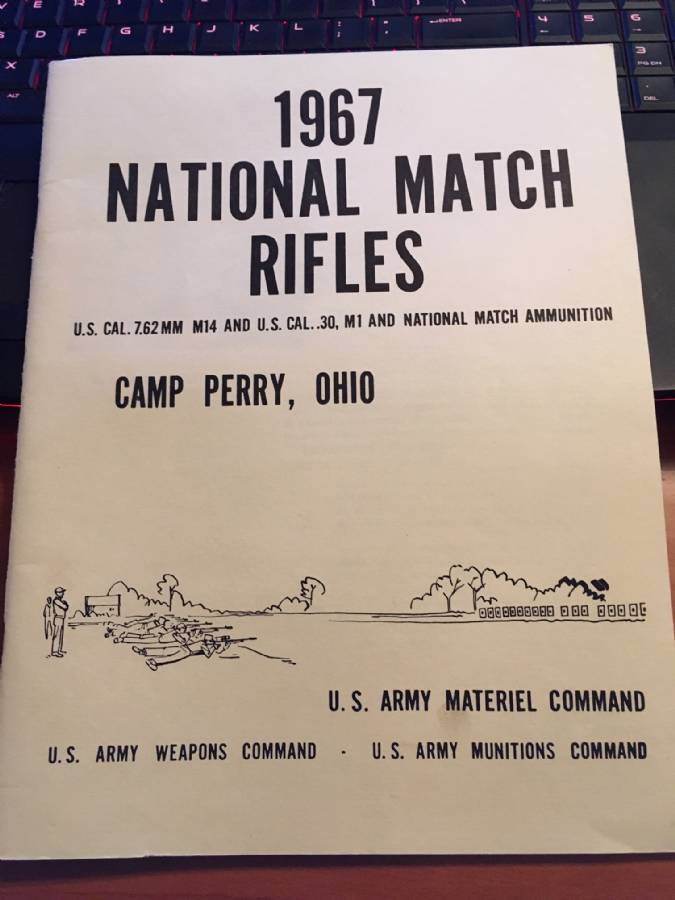I've read Lee Emerson's 2012 M14 history, threads here, and a few on the M14 forum and want to point out some things that might be confusing.
When you read there were differences between Navy and Army programs you have to recognize there were at least FIVE or more separate distinct and different groups trying to squeeze more function and life out of the M14.
First, you had the conventional Army and the USAMU. Army Materiel Command (later Tank and Automotive Command) and Rock Island had the Big Army responsibility for formal small arms programs and whether or not the Army adopted a weapon, first assigning a formal "XM" and then a formal "M-" type-classification once the weapon is formally adopted and put into service (XM-4 to M4 Carbine, and XM-110 to M110 for the KAC sniper rifles for example). The Army G3 (Operations), G4 (logistics), G7 (training), and G8 (force structure, budget, and dollars) all agree there's a requirement; how many we need (as opposed to how many we're going to actually buy); who gets how many; and how the dollars are going to be spread (between purchases and maintenance). Add USSOCOM and SOCOM dollars after 1987 and the math gets even more complicated (by law the Army buys an item for Army Special Operations Forces if it's a common item -- if it's a USASOC-peculiar item, USASOC pays for the SOF-queer modifications. If the whole GUN system is SOF-queer then it's bought with all-SOF dollars. An M4 is bought by the Army using a chunk of Mother Army's budget, but SOPMOD
accessories are paid for by USSOCOM.
Rock Island (after Springfield Armory closed) has responsibility for specifying National Match standards for the M1 and M14 rifles and the M1911A1 pistol. After JFK, RFK, and Martin Luther King were all murdered the Army dropped support for the National Matches at Camp Perry after 1968 and no longer published, kept up with, or maintained National Match specifications (which is why there are no National Match standards for the M16, M110, M9, M11, M17, or M18, nor for 5.56mm or 9mm).
The US Army Marksmanship Unit is tasked to R&D, field, and maintain competition and match weapons for the National Matches, so it has free rein to prototype hot-rod (but not buy or field) anything the Army or Army SOF Forces has or buys, or has a
hardware hole that needs filling. These are a National Match M9 and iron-sight AR-10s:
The M21 is basically a National Match M14 with a scope, so there was overlap. Rock Island had a National Match Armorer course and was supposed to be the stateside maintenance depot for M21s, but they
sucked. To fix M21s, a lot of weapons came back to the USAMU, specifically to Hook Boutin's service rifle shop to get repaired
correctly or to un-f@rk Rock Island's work.
The M21 was a tiny fraction of all the M14s, M16s, M79s, M203s, and M60s bought for the Vietnam War. Divisions would deadline or lose in combat more standard line small arms
in a single year than all M21s ever built for units
across the entire Army. Once Vietnam fell and before the M24 was adopted the M21 was neglected and forgotten, a curiosity since the most exposure Army
officers had to it (kinda-sorta) was the M14s they may have seen or handled
as cadets.
The only units that were still constantly using them were scout platoons, marksmanship / shooting teams, and Special Forces -- a very small demand pool. Shooting teams maintained their own weapons or sent them back and forth to the USAMU, the National Guard Marksmanship Shops, or small regional MTU shops.
In 1984 the Army adopted the M24 and started to replace the M21 on a direct 1-for-1 basis. Most of the regular Army complied because the M21s were plain worn out, and good riddance. Shooting teams and Special Forces wanted to keep their guns and refused to turn them in (there was no way an M16A1 or M16A2 could stand in as a back-up). For SF spotters there simply wasn't an option -- there wasn't another 7.62 self-loader until the SR-25 and AR-10 were introduced in 1993/94. USSOCOM would buy SR-25s but only outfit a few units, and then just enough to fill a small "Loaning library," the USSOCOM Joint Operational Stocks.
10th Group wanted to keep their upgraded M21s and took to calling them "M25s" in the hope USASOC would adopt them as a SOCOM-peculiar weapon. SOCOM and USASOC were was still so new they didn't assume the full mantle for outfitting Army SOF, and Big Army wasn't willing to spend more money on a dead program. M25 died. Besides Tom Kapp and MSG Ammelung, Rick Boucher (retired SOTIC Instructor and a 10th Group counterpart to those gentlemen) is probably the last of the Mohicans when it comes to first-person 10th Group M25, M24, and SF Sniper School information and knowledge.
9-11 and the GWOT shows the Army it probably should have some kind of rifle capability past 300 yards, but we're short (and always will be) snipers. Division commanders plead for a solution. SHABAM, Rock Island offers free M14s again! Let's dress them up, make them heavier, pass them out as EBRs, and not train soldiers to use them. We'll kill funding for training (for a gun out of the Army inventory for at least twenty five years) later. If you need a manual, click here:
https://pdf4pro.com/amp/view/change-1-dated-26-jan-2009-m14-enhanced-2d8eb4.html
So, for the Army, you have Rock Island and the USAMU. For US Army Special Operations Command you have Mother Army providing standard weapons to be modified for SOF missions. If USASOC wants SOF-queer guns, modifications, ammo, or accessories they have to buy them with SOF dollars. There are only so many dollars, so weapons have to compete with hard armor, different uniforms and gear for fighting around the world, or better items than the Army is providing (Oakleys, dual or quad-tube night vision, lightweight helmets, radios, armor plates and carriers, web gear, medical stuff, etc.).
The USAMU went away from the M14 for Camp Perry starting in 1993, and left it for long range service rifle in 2004. Around 2010 the AR-10 became the long range service rifle king.
For the SEALs, outfitting them for a whole year to five years still costs less than a single prop for a capitol ship, so they throw money at their frogmen with a "Yeah, whatever -- here, take your money" (for Navy budgeteers, until you start talking boats and submarines, small arms is a rounding error). Naval Surface Warfare Center Crane (after Vietnam as busy as the Maytag repairman) was more than willing to build guns for the SEALs, and worked that into becoming SOCOM's small arms buyer because it takes forever for Rock Island and Picatinny Arsenal to produce anything.
The Marine Precision Weapons Battalion functions a lot like the USAMU. They can build whatever the Marines need, but they don't control the Marine Corps budget.
Crane serves the Fleet Navy's needs besides the SEALs (Camp Perry; Master-at-Arms police, security, and boarding party; and EOD), so their Special Warfare expertise bleeds over into small arms developments for the Big Navy ("Port Security Rifles," EOD M14s, and Mark 18 boarding party carbines).
SR-25, MK11, M110, M110A1, and M27 will probably mark the end of the M14.
Just because you say "Army," "Marine Corps," or "Navy" M14 programs, the only real common thread between all of them is old, paid-for ("Free") M14s that nobody really cares if you modify since they were no longer standard weapons in short supply.




